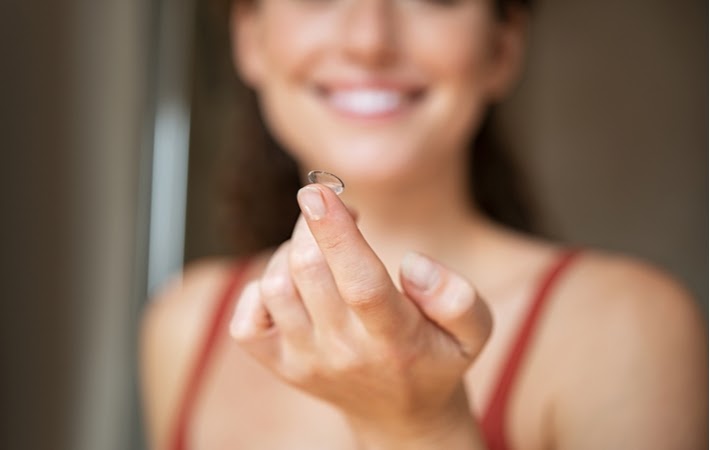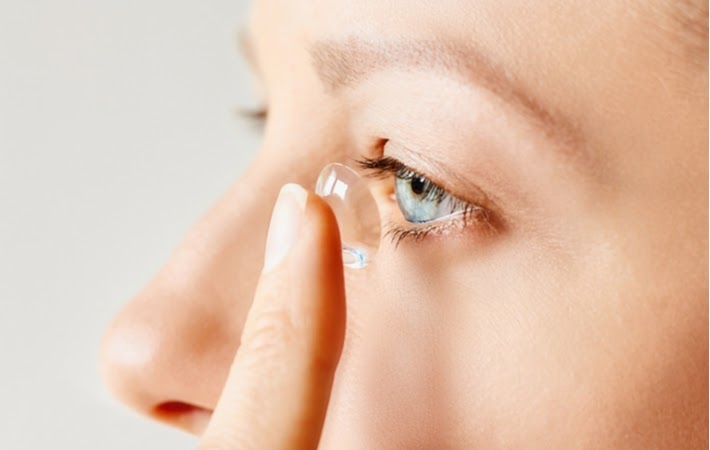Millions of Americans experience dry eye symptoms, and irritation and soreness can affect your ability to focus or even damage your eyes. Dry eyes can make wearing contacts difficult because of inflammation.
Many optometrists recommend scleral lenses if contacts are difficult to wear because of dry eyes, but do they help? Continue reading to learn more about dry eye disease, scleral lenses, and if they work for dry eyes.
What is Dry Eye?
Dry eye disease is a common condition where your tears cannot properly lubricate your eyes. This inadequate lubrication typically occurs when there is instability within your tear film. Many assume dry eyes are normal, but this condition has several irritating symptoms.
Dry Eye Symptoms
- A stinging or burning sensation in your eyes
- Light sensitivity
- Difficulty driving at night
- Watery eyes
- Blurred vision
- Eye fatigue
- Red eyes
- Difficulty wearing contact lenses
When a layer of the tear film (oil, aqueous fluid, and mucin) experiences complications, it can lead to dry eye symptoms. These issues arise when there is decreased tear production or increased tear evaporation.
Decreased Tear Production
We tend to produce fewer tears with age, and many older adults are at risk of dry eyes. Age isn’t the only factor affecting tear production. Decreased tear production may occur because of:
- Side effects from antihistamines, decongestants, antidepressants, & other medications
- Medical conditions such as lupus, Sjorgren’s syndrome, or scleroderma
Only around 10% of dry eye cases are due to inadequate tear production, but many still experience red and painful eyes.
Increased Tear Evaporation
Increased tear evaporation is far more common, usually happening due to poor tear quality. Your eyes are moisturized by tears each time you blink, and the oily layer of the tear film prevents evaporation. When complications with this oil develop, your eyes can dry too quickly.
The glands releasing this oil can become blocked or clogged, causing increased tear evaporation. When this oil or the glands releasing it have problems, this is known as meibomian gland dysfunction.
Other causes of increased tear evaporation include:
- Infrequent blinking
- Posterior blepharitis
- Eye allergies
- Eyelid problems (ectropion & entropion)
- Wind, smoke, or dry air
- Vitamin A deficiency
Contacts can be difficult to wear if you have dry eyes. Dryness and inflammation can make contact lenses feel uncomfortable and irritating.
For those who want contact lenses but suffer from dry eyes, many recommend scleral lenses. Before you speak with your optometrist, what are these lenses?

What Are Scleral Lenses?
Scleral lenses vault over the cornea, covering its entire surface. While regular contacts rest on the corneal tissue, scleral lenses stay on the sclera (the white of the eye). They are rigid gas permeable lenses with 3 different variations, semi-scleral, mini-scleral, and full scleral lenses.
These lenses have several advantages over traditional soft contact lenses, including:
- Easier handling
- Sharper vision
- Durability
Scleral lenses offer other benefits, making them helpful for several different eye conditions. These contacts can transform an irregular cornea into a smooth optical surface because it rests on the sclera. The lens helps create a fluid reservoir between the cornea and back of the lens to relieve dry eye symptoms.
Scleral contact lenses may be helpful if you have:
- Astigmatism
- Keratoconus
- Dry eye
- Graft versus host disease
- Stevens-Johnson syndrome
- Corneal irregularities
- Sjogren’s syndrome
Because of its fluid reservoir, many recommend scleral lenses for dry eyes, but how effective are these contacts?
Do Scleral Lenses Work for Dry Eye?
While scleral lenses can’t cure dry eye disease, they can relieve your symptoms by consistently moisturizing your eyes. These lenses cover the entire corneal surface, offering a more comfortable design for long-term use.
By resting on the sclera, scleral lenses can protect your eyes from irritants like smoke, wind, and dust. There is less of a need for artificial tears (eye drops) when using these lenses. Overall, scleral contact lenses are effective for treating dry eye disease.
In a 2015 study, researchers found scleral contact lenses can relieve symptoms in patients with severe or difficult to manage dry eye disease. People with moderate to severe dry eye can benefit from scleral lenses. The fluid reservoir in the back of the lens helps to constantly moisturize and wash over the cornea.
Scleral contact lenses can be beneficial if you suffer from dry eye disease, but they aren’t for everyone. Speaking with your optometrist can determine whether or not these lenses are a good fit for your needs. There are always alternative dry eye treatments available.
Find the Best Care for Your Eyes
Don’t let dry eyes cause irritation and discomfort. Find the best treatment for your symptoms and enjoy comfortable vision. Ask your optometrist about what treatment options are available at your clinic.
If you’re interested in scleral lenses for your dry eyes, book an appointment. Perspective Eye Center can help you find the long-term dry eye relief you’re looking for.



